Business Solutions
Do you have these concerns?
1. How can you detect and prevent an employee from downloading large amounts of sensitive data without authorization?
2. What steps do you take when an employee spends work hours accessing non-work-related sites, leading to productivity loss and security risks?
3. How do you monitor and identify unusual or suspicious user behavior that could indicate insider threats?
4. What measures do you implement to ensure compliance with company policies on user activity?
5. How do you track and report on user activities to identify potential security risks?
6. How do you ensure that employees are not using company resources for unauthorized activities?
7. What steps do you take to monitor and control the use of removable media devices by employees?
8. How do you track and prevent the sharing of sensitive data through personal email accounts or cloud services?
9. What measures do you implement to monitor and control employee access to social media during work hours?
10. How do you ensure that user activity monitoring complies with privacy regulations and company policies?
We have User Activity Monitoring Solution- UAM
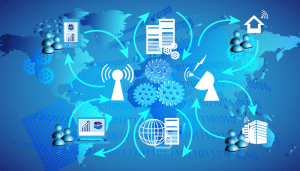
Monitors and records user activities, such as keystrokes, website visits, application usage, and file transfers, to detect and prevent insider threats and policy violations.
Do you have these concerns with your phones, laptops, desktops, apps, data leackage ?
1. What do you do if your employee loses a company phone, and sensitive data is exposed because the device is not encrypted or remotely wipeable?
2. How do you prevent an employee from installing unauthorized apps on a company tablet that could expose the network to malware?
3. How do you manage and secure personal devices used by employees for work purposes?
4. What steps do you take to ensure compliance with company security policies on mobile devices?
5. How do you track and control mobile device access to sensitive company data?
6. How do you enforce password protection and encryption on all mobile devices accessing company data?
7. What steps do you take if an employee leaves the company but still has access to corporate data on their mobile device?
8. How do you ensure that mobile devices are not used to access restricted or blacklisted websites?
9. How do you manage and distribute security updates and patches across all mobile devices?
10. What measures do you implement to prevent unauthorized Bluetooth or Wi-Fi connections on company mobile devices?
We have solutions to monitor and control all Phones, Laptop, Desktop, Apps etc

Manages, secures, and enforces policies on mobile devices, ensuring data security, controlled device settings, and secure app deployment.
Do you have these concerns with your phones, laptops, desktops, apps, data leackage ?
1. How do you protect corporate data when employees use personal devices for work without proper security measures?
2. What steps do you take to secure data being transferred over unsecured Wi-Fi networks?
3. How can you ensure that all mobile devices accessing company data are compliant with security protocols?
4. How do you manage application access and usage across a diverse mobile workforce?
5. What measures do you implement to secure corporate emails and documents on personal mobile devices?
6. How do you enforce multi-factor authentication (MFA) on all mobile devices accessing company systems?
7. What steps do you take to prevent data leakage when employees access corporate data from public networks?
8. How do you manage and monitor the use of third-party apps on employee mobile devices?
9. How do you ensure that sensitive corporate data is wiped from a device when it is no longer in use?
10. What measures do you take to control and monitor the sharing of corporate data between mobile devices and cloud services?
We have solutions to monitor and control all Phones, Laptop, Desktop, Apps etc
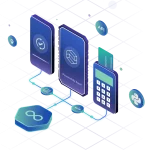
Extends MDM capabilities to manage devices, apps, and content, ensuring comprehensive security across all mobile devices and platforms..
Do you have these concerns with your phones, laptops, desktops, apps, data leackage ?
1. How can you enforce consistent security practices across all types of endpoints, including desktops, laptops, and mobile devices?
2. What do you do when IT struggles to enforce consistent security policies across both on-premise and remote devices?
3. How do you maintain control over diverse endpoints in a hybrid work environment?
4. What strategies do you use to streamline patch management across all endpoints?
5. How do you ensure that all company devices remain secure and compliant with policies even when employees work remotely?
6. How do you manage endpoint access to sensitive data based on location or device type?
7. What measures do you implement to detect and respond to unauthorized device access?
8. How do you enforce encryption on all endpoints to protect sensitive data?
9. How do you monitor and control the installation of software and applications across all endpoints?
10. What steps do you take to manage and secure IoT devices connected to your corporate network?
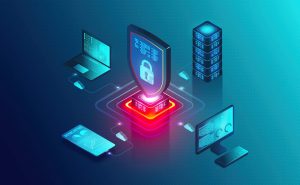
Centralized management and security enforcement across all endpoints (desktops, laptops, mobile devices), ensuring uniform security policies and streamlined operations.
Difficulty in Managing Passwords?
1. What happens if an employee reuses the same password across multiple services, and one of those services gets breached?
2. How do you protect your company from a phishing attack that tricks employees into revealing their passwords?
3. What steps do you take to ensure strong, unique passwords across all employee accounts?
4. How do you manage and secure password changes when employees leave the company?
5. What measures do you implement to store and protect sensitive passwords securely?
6. How do you enforce regular password updates across all systems and applications?
7. What steps do you take to prevent employees from sharing passwords or writing them down?
8. How do you manage and secure administrative passwords that provide access to critical systems?
9. How do you ensure that password recovery processes are secure and do not expose sensitive information?
10. What measures do you implement to detect and respond to unauthorized password attempts?
We have Password Management Solutions
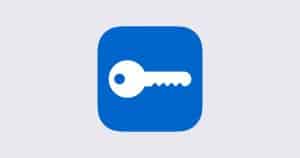
Manages and secures passwords, providing password vaults, strong password generation, and integration with multi-factor authentication (MFA).
Do you have these concerns with your User account access?
1. What measures do you take to prevent a former employee’s credentials from being used to access sensitive company resources?
2. How do you ensure that contractors only have access to the internal systems they need, without compromising security?
3. How do you manage and control access to cloud-based applications and services?
4. What steps do you take to implement role-based access control (RBAC) within your organization?
5. How do you handle access requests and approvals in a secure and efficient manner?
6. How do you enforce least privilege access to minimize security risks?
7. What steps do you take to monitor and audit access to sensitive data and systems?
8. How do you manage and revoke access to shared resources when an employee leaves the company?
9. How do you ensure that access to critical systems is granted only to authorized personnel?
10. What measures do you implement to protect against identity theft and unauthorized access?
We have Identity and User Management IAM Soltuon
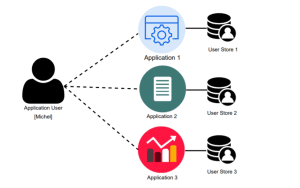
Manages user identities and access permissions, ensuring that only authorized users have access to specific resources. Provides Single Sign-On (SSO) and RBAC.
Data Backup issues?
1. What do you do if a ransomware attack encrypts all your company files and you don’t have a recent backup?
2. How do you recover from a critical server failure when essential business data is permanently lost?
3. What steps do you take to ensure regular backups of all critical data?
4. How do you test and verify the integrity of backups to ensure they can be restored when needed?
5. What measures do you implement to automate the backup process and reduce the risk of human error?
6. How do you ensure that backups are stored securely and protected from unauthorized access?
7. What steps do you take to ensure that backup data is encrypted both at rest and in transit?
8. How do you implement a disaster recovery plan that ensures minimal downtime and data loss?
9. What measures do you implement to ensure that backups are performed regularly and consistently?
10. How do you manage and retain backup data to meet regulatory and compliance requirements?
We have Data Backup and Recovery Solutions
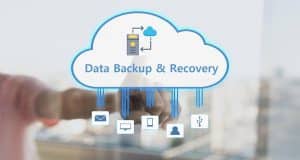
Ensures data is regularly backed up and can be restored quickly in case of data loss, providing a critical layer of protection against data breaches and disasters.
How do you do it?
1. How do you detect and respond to security threats when security logs are scattered and not centrally analyzed?
2. What can you do to ensure that a data breach is detected promptly and not months later?
3. How do you correlate security events across different systems to identify potential threats?
4. What measures do you implement to prioritize and respond to security alerts efficiently?
5. How do you ensure continuous monitoring and logging of all critical security events?
6. How do you manage and analyze large volumes of security data in real-time?
7. What steps do you take to ensure that security alerts are not missed or ignored?
8. How do you identify and respond to insider threats using security event data?
9. How do you ensure that security event data is securely stored and protected from tampering?
10. What measures do you implement to meet compliance requirements for security monitoring and reporting?
We have SIEM and EDR Solutions
Security Information and Event Management (SIEM)
Aggregates and analyzes security data in real-time, helping detect and respond to security threats across the IT infrastructure.
Do you have these concerns with your Devices?
1. What do you do if a sophisticated piece of malware bypasses antivirus software and starts exfiltrating data from an employee’s workstation?
2. How do you respond if an employee unknowingly installs malicious software that exploits a zero-day vulnerability?
3. What steps do you take to detect and respond to advanced persistent threats (APTs) on endpoints?
4. How do you ensure that all endpoints are protected against the latest security threats?
5. What measures do you implement to isolate and contain infected endpoints to prevent the spread of malware?
6. How do you monitor and respond to suspicious activity on endpoints in real-time?
7. What steps do you take to ensure that all endpoints have up-to-date security patches and software?
8. How do you detect and remove malware that has evaded traditional security measures?
9. What measures do you implement to minimize the impact of an endpoint security breach?
10. How do you ensure that endpoint security policies are enforced consistently across all devices?
We have EDR Solutions
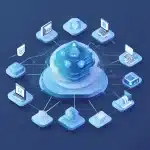
Endpoint Detection and Response (EDR)
Detects and responds to cyber threats at the endpoint level, providing advanced threat protection, real-time monitoring, and incident response.
Monitoring & Performance Management
1. How do you prevent frequent website downtime caused by server performance issues that are not detected in time?
2. What steps do you take to avoid network slowdowns during peak business hours that lead to lost productivity?
3. How do you monitor and manage the performance of critical business applications in real-time?
4. What measures do you implement to ensure that IT infrastructure is scalable and can handle increased demand?
5. How do you ensure that performance issues are identified and resolved before they impact users?
6. How do you monitor and manage the performance of cloud services and resources?
7. What steps do you take to ensure that network performance meets the needs of remote and on-site employees?
8. How do you manage and monitor the performance of virtualized environments and containers?
9. What measures do you implement to ensure that performance monitoring tools are integrated with other IT management systems?
10. How do you track and report on IT performance metrics to support decision-making and continuous improvement?
We have Dedicated Monitoring and Performance Solutions
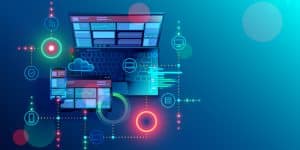
Monitors IT infrastructure, networks, and applications, detecting issues before they escalate and ensuring systems meet performance standards for smooth operations.
For a company that is using a UEM tool, adding a dedicated Monitoring and Performance Management tool is highly recommended to achieve comprehensive IT management. While UEM handles the endpoint management side, a separate performance and monitoring tool will cover the broader IT infrastructure, ensuring everything from servers to networks and applications is running efficiently and effectively.
Trouble Managing your Cloud Space?
1. How do you manage and optimize cloud resources to prevent spiraling costs due to unused resources?
2. What steps do you take to ensure that cloud resources are regularly updated and secure?
3. How do you monitor cloud infrastructure to detect performance issues before they impact business operations?
4. What measures do you implement to ensure compliance with cloud security standards?
5. How do you manage and control access to cloud resources across different departments?
6. How do you handle cloud resource allocation to prevent overprovisioning or underutilization?
7. What steps do you take to optimize cloud spending and prevent budget overruns?
8. How do you ensure that cloud services are configured securely and in line with best practices?
9. What measures do you implement to monitor and manage cloud data storage costs?
10. How do you manage and protect sensitive data stored in the cloud from unauthorized access?
We have Cloud Management Platforms (CMP) solutions
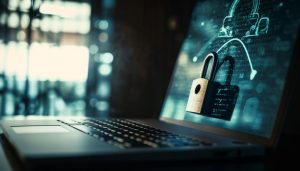
Provides tools to manage cloud infrastructure, optimize resource usage, monitor performance, and ensure security compliance, reducing costs and improving efficiency.